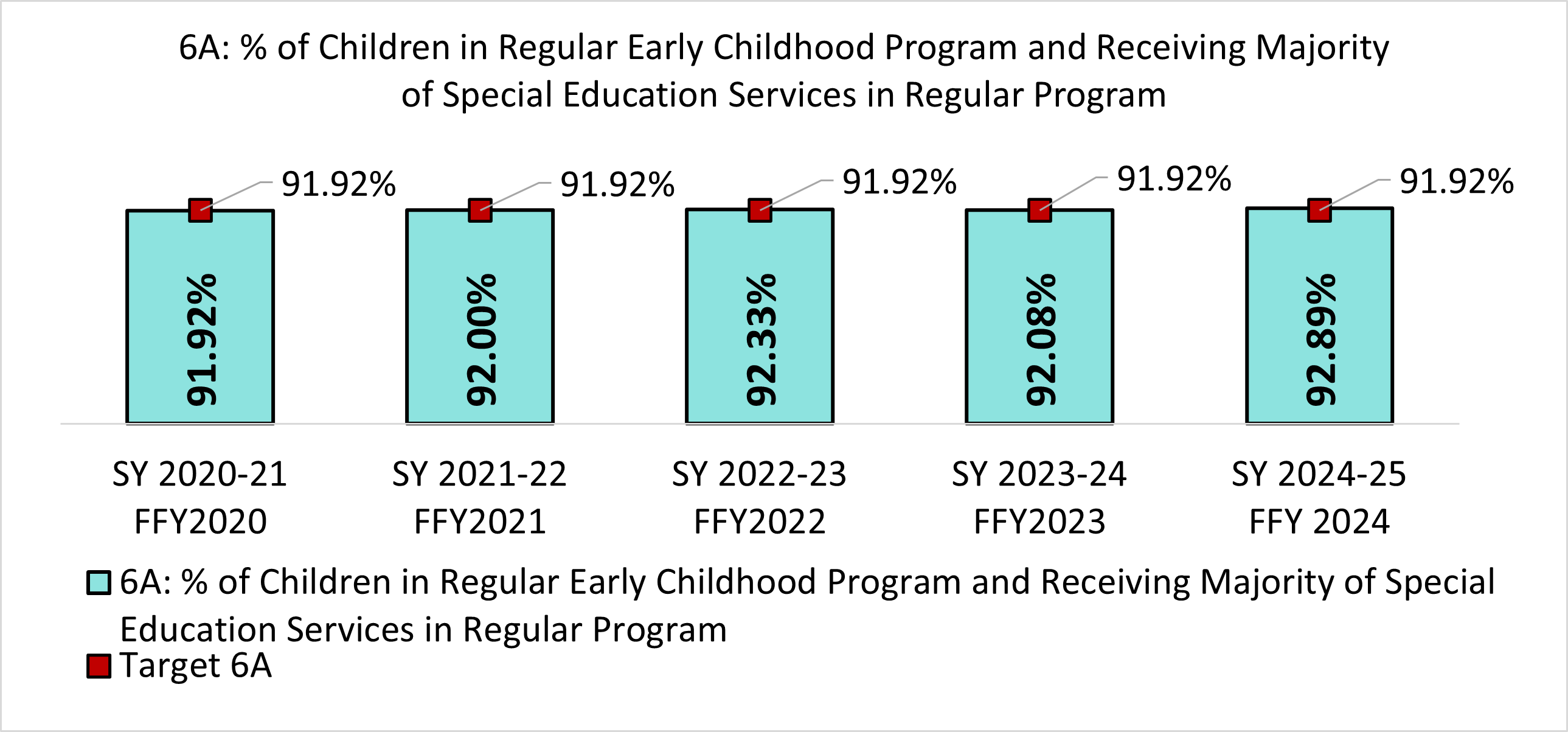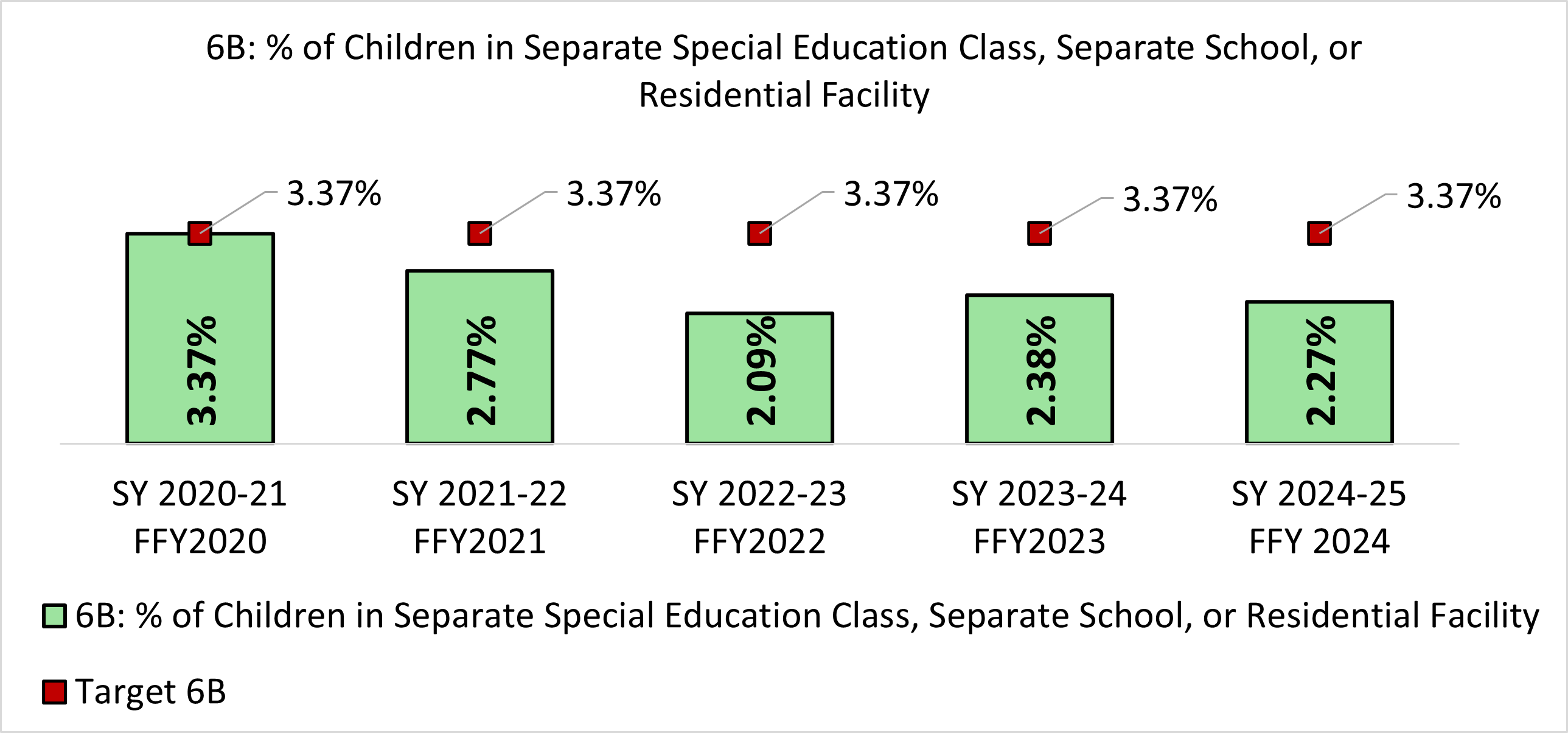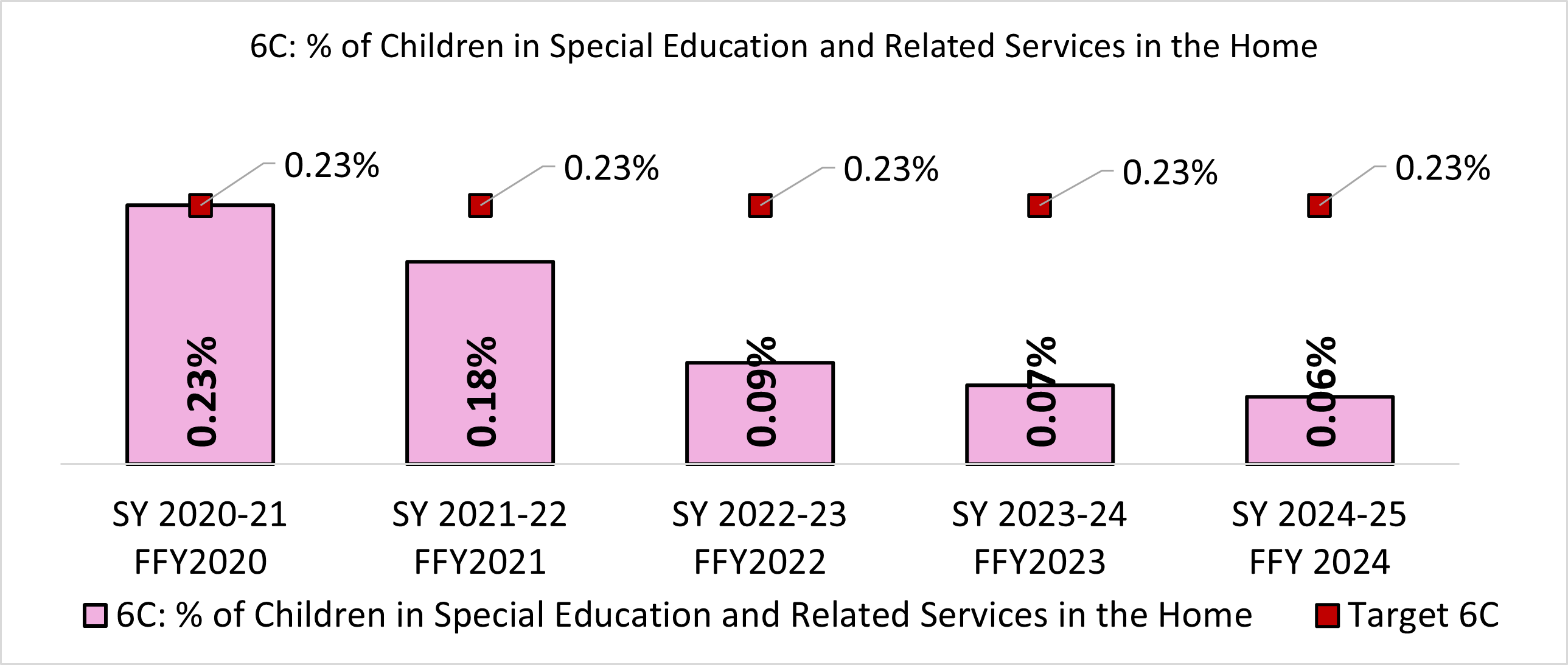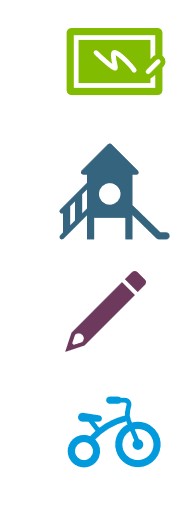You are here
Indicator 6 - Early Childhood Settings
Definition
Percent of children with IEPs aged 3 through 5 attending an early childhood program in the following settings:
Indicator 6A: Attending a regular early childhood program and receiving the majority of special education and related services in the regular early childhood program
Indicator 6B: Attending a separate special education class, separate school, or residential facility
Indicator 6C: Receiving special education and related services in the home
(20 U.S.C. 1416 (a)(3)(A))
Measurement
Indicator 6A. Percent = [(# of children ages 3, 4, and 5 (in pre-k) with IEPs attending a regular early childhood program and receiving the majority of special education and related services in the regular early childhood program) divided by the (total # of children ages 3, 4, and 5 with IEPs)] times 100.
Indicator 6B. Percent = [(# of children ages 3, 4, and 5 (in pre-k) with IEPs attending a separate special education class, separate school, or residential facility) divided by the (total # of children ages 3, 4, and 5 with IEPs)] times 100.
Indicator 6C. Percent = [(# of children ages 3, 4, and 5 (in pre-k) with IEPs receiving special education and related services in the home) divided by the (total # of children ages 3, 4, and 5 with IEPs)] times 100.
How is Colorado doing on this indicator?



Indicator 6 Results Table for the current SPP/APR Cycle
| School year and Federal Fiscal Year | SY 2020-21 FFY2020 | SY 2021-22 FFY2021 | SY 2022-23 FFY2022 | SY 2023-24 FFY2023 | SY 2024-25 FFY2024 |
| 6A: % of Children in Regular Early Childhood Program and Receiving Majority of Special Education Services in Regular Program | 91.92% | 92.00% | 92.33% | 92.08% | 92.89% |
| 6B: % of Children in Separate Special Education Class, Separate School, or Residential Facility | 3.37% | 2.77% | 2.09% | 2.38% | 2.27% |
| 6C: % of Children in Special Education and Related Services in the Home | 0.23% | 0.18% | 0.09% | 0.07% | 0.06% |
Targets for the Current SPP/APR Cycle
| Federal Fiscal Year (FFY) | 2020 | 2021 | 2022 | 2023 | 2024 | 2025 |
|---|---|---|---|---|---|---|
| Data from School Year | 2020-21 | 2021-22 | 2022-23 | 2023-24 | 2024-25 | 2025-26 |
| Target A >= | 91.92% | 91.92% | 91.92% | 91.92% | 91.92% | 92.00% |
| Target B <= | 3.37% | 3.37% | 3.37% | 3.37% | 3.37% | 3.30% |
| Target C <= | 0.23% | 0.23% | 0.23% | 0.23% | 0.23% | 0.22% |
Improvement strategies for Indicator 6
- CDE currently provides professional learning opportunities to support teachers in being more comfortable and feel more capable of including all students (rather than relying on service providers)
- CDE, in partnership with districts, will examine outcomes for children in separate classrooms, inclusive classrooms, and community sites at the local level by using existing data and these critical questions: (SY2021-22)
- What is the quality of the EC program where young children receive special education services? (inclusive practices, and a standards-aligned curriculum, are the outcomes that we expect)
- How do outcomes for children differ between service-delivery models (structures) and child outcomes?
- What do families report help their child develop and learn?
- CDE will offer professional learning that will improve the capacity of special education providers to change service delivery to align with evidence-based co-teaching models. (SY2021-22)
- CDE will collaborate with Positive Early Learning Experiences Center and with the Office of Early Childhood/Preschool Development Grant and develop planned activities to promote inclusion in six selected communities. (SY2021-22)
- CDE plans to partner with AUs to define their role and expectations for developing a culture of inclusion through policy and placement decisions. Provide support to limit segregated placements where they exist. (SY2022-23)
- Targeted TA on reducing separate classrooms
- Revision to LRE guidance for preschoolers
- CDE will partner with PEAK Parent Center to help families understand the value of inclusion and the options available to children in preschool. (SY2022-23)
Additional Resources
- Target Setting Process Video for Indicator 6
- Reporting of Educational Environment for Dec 1st Child Count (DOC)
- Technical Assistance: Making Least Restrictive Environment Placement Decisions for Preschoolers (PDF)
- Policy Statement on Inclusion of Children with Disabilities in Early Childhood Programs
- Early Childhood Special Education Resources and Guidance
For more information, contact:
Having trouble with this webpage?
If you have problems with broken links or accessing the content on this page, please contact the Exceptional Student Services Unit at ESSU@cde.state.co.us. Please copy the URL link for this page into the email when referencing the problem you are experiencing.



Connect With Us





